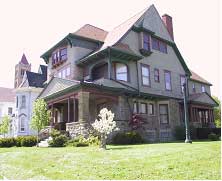Healthy Homes

Home environmental health hazards are chemicals and other things in our home environment that can pose threats to health.
While home health hazards affect all people, young children and women who are pregnant or breastfeeding are at the highest risk. Children are most affected because many home health hazards change how the body and brain develops, and children are exposed more often than adults because of their behaviors (like crawling on the floor or mouthing toys and other objects). Many environmental hazards, like lead and tobacco smoke, can pass from a pregnant or nursing mother to her child.
The Community Engagement Core recognizes there are many community, policy, and personal changes that can help protect health at home. We support several initiatives to promote healthy homes in Rochester:
Rochester Healthy Homes Partnership
The Rochester Healthy Homes Partnership, facilitated by the Community Engagement Core, supports local efforts to reduce home environmental health hazards throughout our community, particularly for children and low-income residents of the City of Rochester.
Virtual Healthy Home
Our Virtual Healthy Home offers information about how to recognize common home environmental health hazards, and how to protect yourself and your family from these hazards. Between 2006 and 2009, a University-Community partnership in Rochester ran a model Healthy Home "museum." This website lets you take a virtual tour of its displays and resources.
For more information about Rochester’s model Healthy Home and other projects, see Healthy Homes Projects.
Healthy Homes Resources
Our resources page provides information for resources available in Rochester, NY and Monroe County. These include educational organizations that can help you take steps toward protecting your family, sources for more information, and some grant programs that can help eligible homeowners reduce environmental hazards in their homes.
This website is supported in part by a grant from the National Institute of Environmental Health Sciences, NIEHS (P30 ES01247).